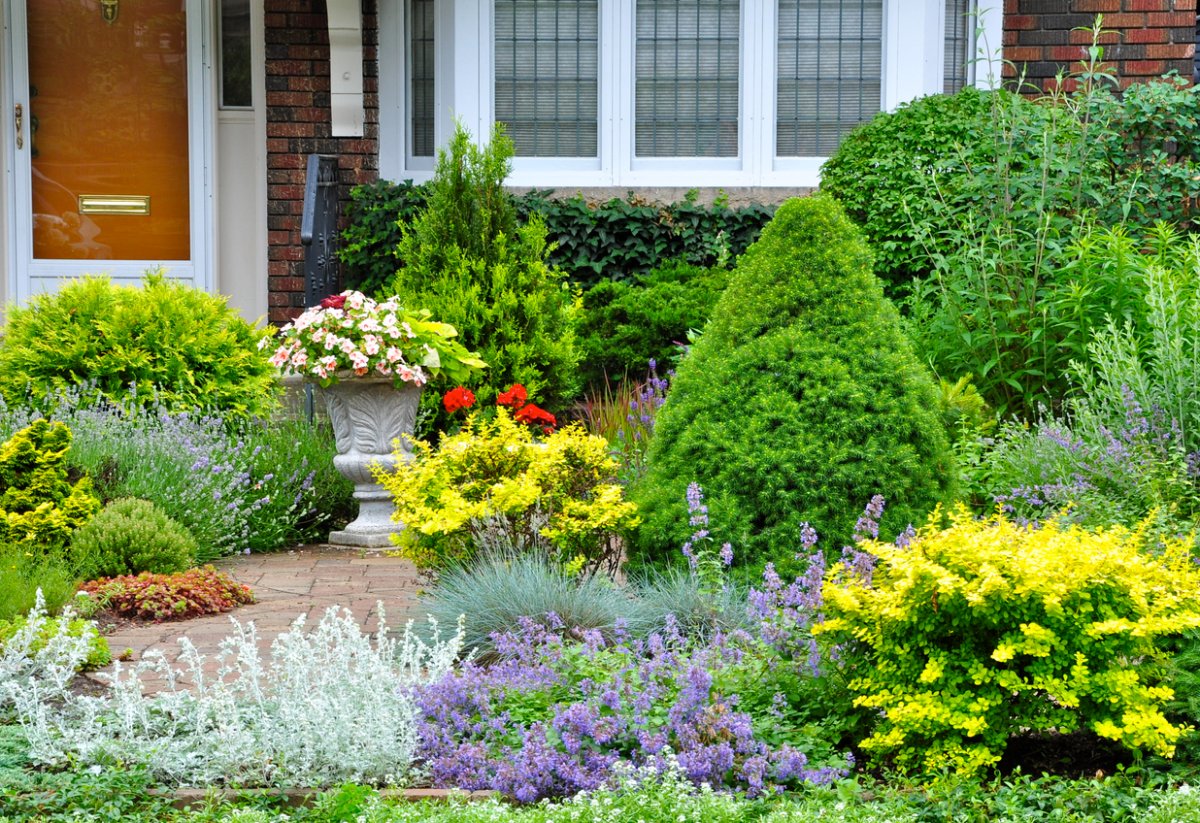

We may earn revenue from the products available on this page and participate in affiliate programs. Learn More ›
Thorny plants, many of which actually “make their points” to discourage animals from eating their foliage, may provide another benefit to homeowners brave enough to plant them. According to the University of Hawaii, such spiny species can be “psychological and physical barriers” that make a home appear to be a “less suitable target to the opportunistic burglar.”
In other words, a thief who is just looking for an easy break-in might avoid homes with sharp-toothed pooches or plants. You’ll need to be careful around plants with thorns yourself, though. While Fido can differentiate between family members and intruders, your pyracantha can’t!
RELATED: 8 Essential Home Security Tips to Make Your Home Safer
1. Barberry (Berberis spp.)

While some barberry species are invasive and banned in some states, wintergreen barberry (Berberis julianae) boasts what Oregon State University calls “‘lethal’ three-parted spines,” and it can form hostile hedges that would deter even the most determined trespasser. Hardy to USDA zones 6 through 8, this species also provides decorative yellow flowers in spring followed by red foliage and dark blue berries for the birds in fall.
2. Blackberry (Rubus spp.)
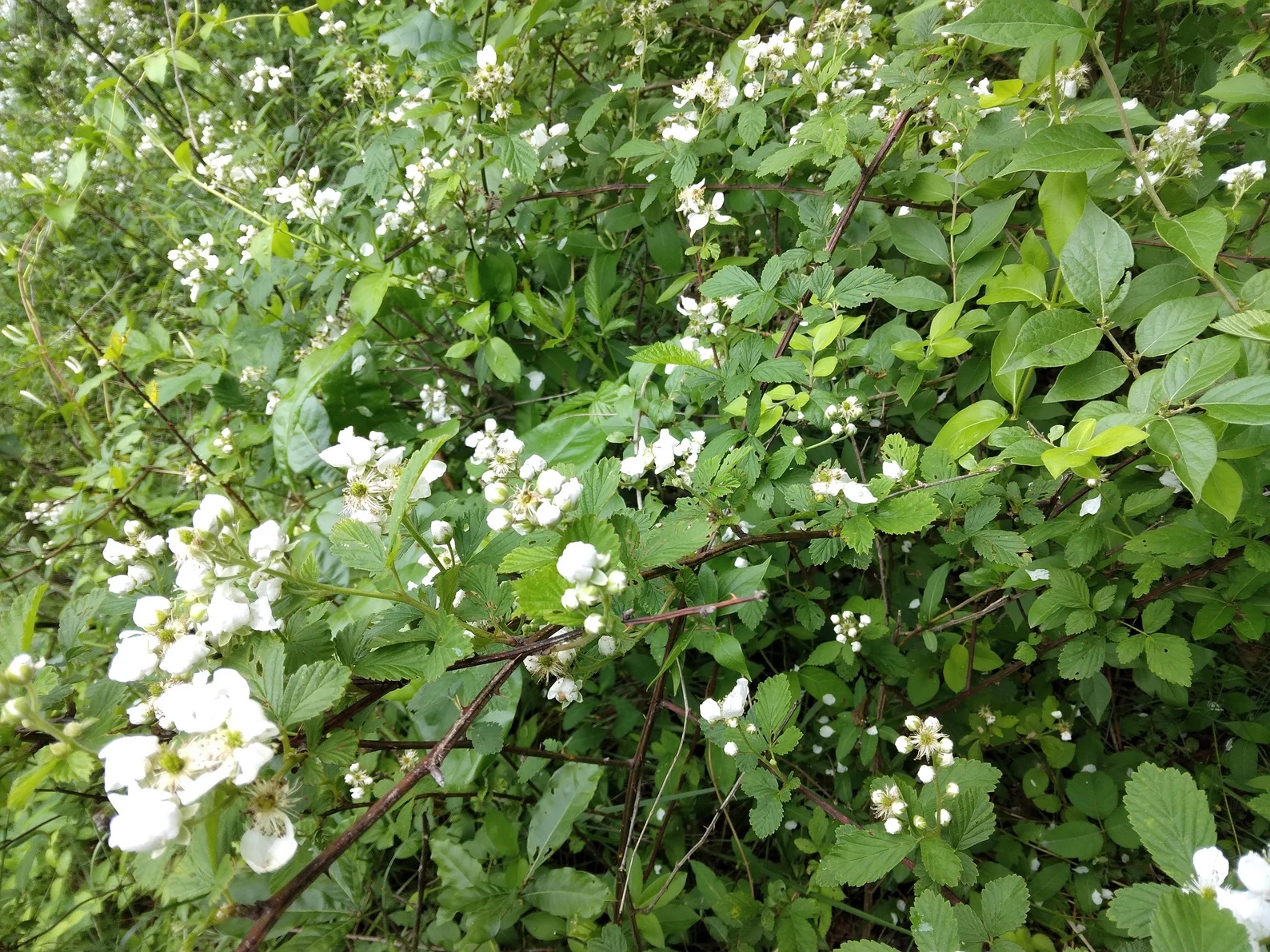
Thorn bushes for security could conceivably include brambles like blackberries to protect your home. They should provide a scratchy, somewhat scraggly barrier between your property and potential villains—not to mention summer fruit. However, many modern blackberry cultivars have been bred to be thornless. So you’ll want to opt for the wild variety or a still-prickly type such as the Kiowa blackberry, hardy in zones 5 to 9, should you plan to use those brambles as buffers to rebuff troublemakers.
3. Bougainvillea (Bougainvillea spp.)
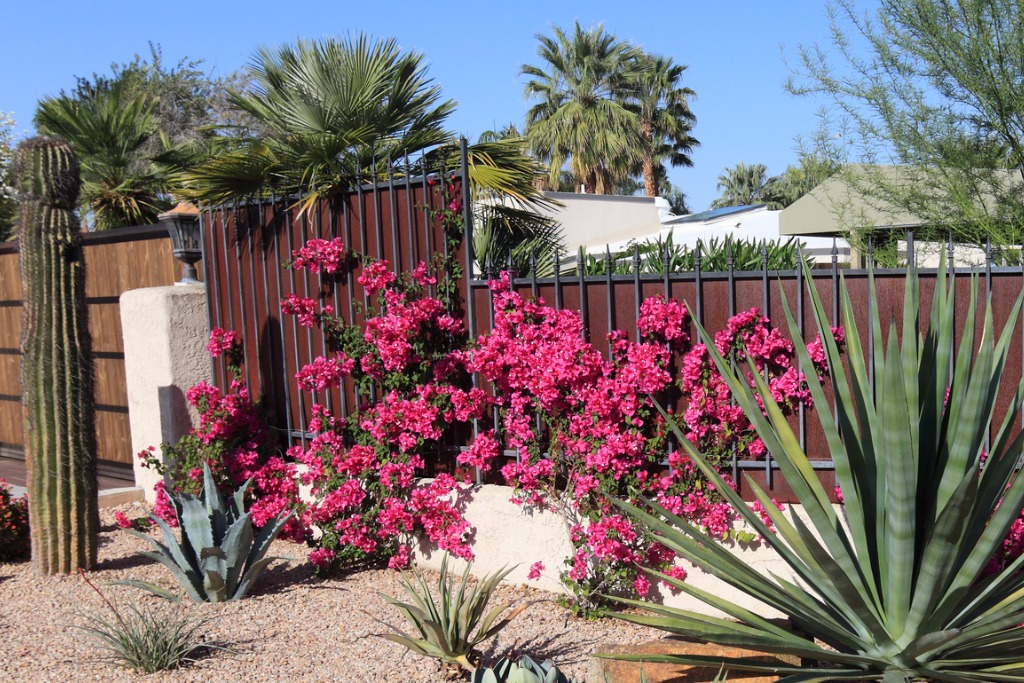
Often clambering over walls, where its colorful bracts display beautifully in zones 10 through 12, bougainvillea actually can protect those walls from criminally minded climbers. That’s because its vines often hide wicked thorns under their leaves. Some modern hybrids are thornless, so you might want to opt for thorny species such as Bougainvillea glabra, which can grab ya.
4. Crown of Thorns (Euphorbia milii)
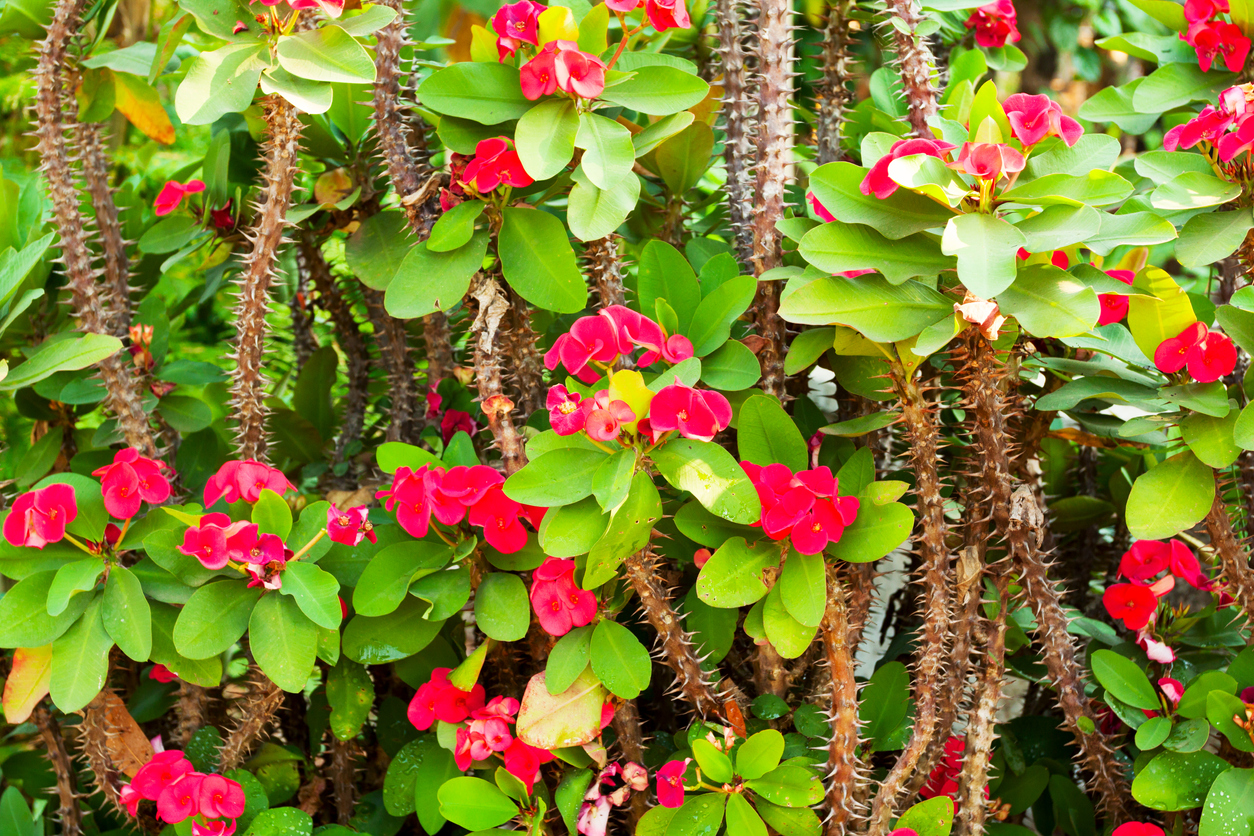
This plant’s blooms are also bracts and, as its name implies, it is one of the spiniest types of thorn bushes. Though often employed as a houseplant for its long-lasting blooms, crown of thorns will grow up to 3 feet tall outdoors in zones 9 to 11. That makes it a good choice to place in flower beds beneath windows in warm climates. Anyone unwanted attempting to enter through a window would have to do plenty of shimmying to avoid crown of thorns’ spikes.
5. Devil’s Walking Stick (Aralia spinosa)
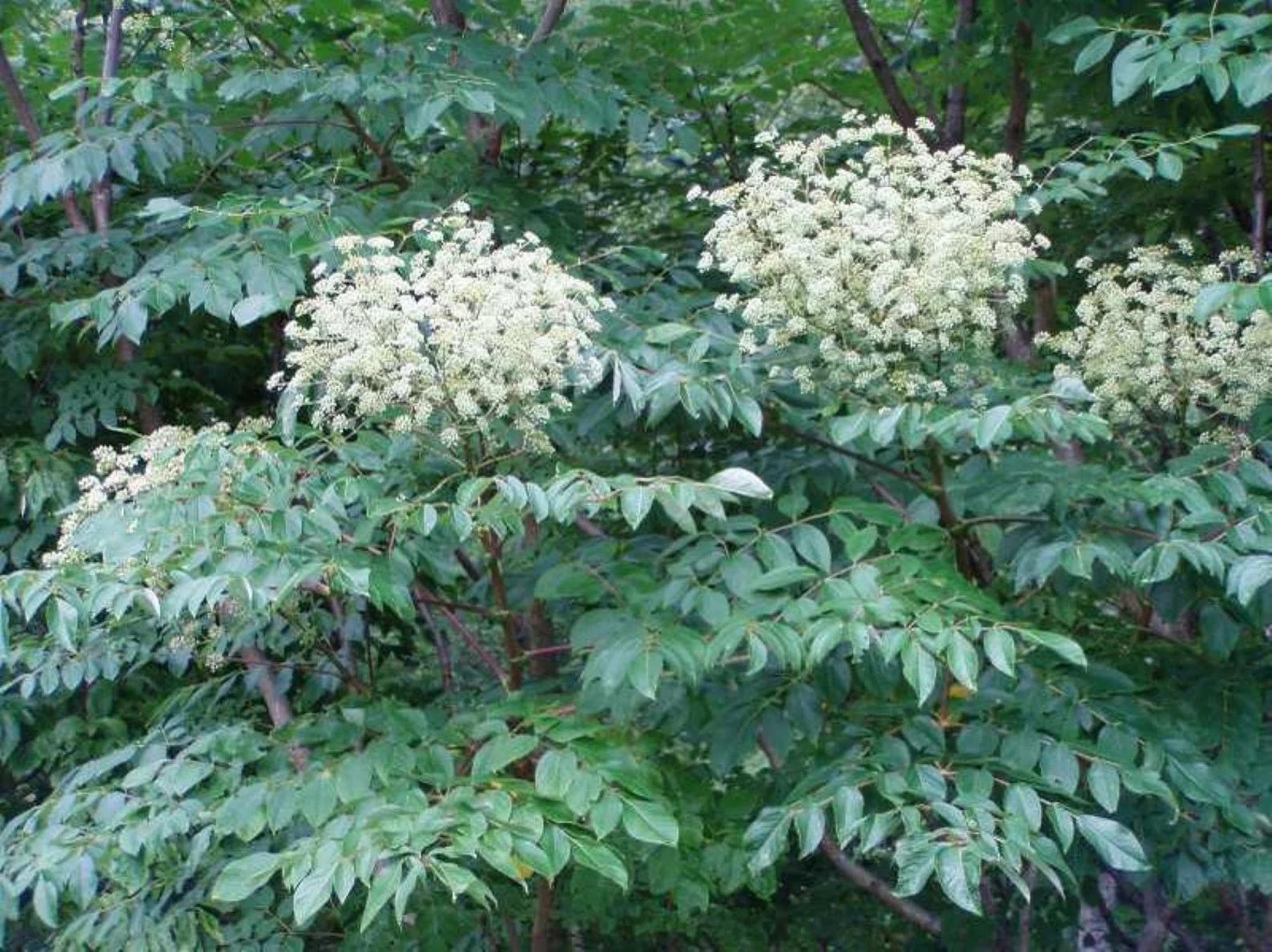
Among tall thorny plants, this deciduous aralia is definitely one of the most “wicked,” since it harbors spines on its stems, leaves, and branches. Hardy in zones 4 to 9, it generally tops out at a height of 15 feet as a bush, and 35 feet as a tree. This stick-it-to-them species offers canopies of lush foliage and panicles of white flowers up top in summer, while showing its “teeth” below. However, the plant’s slightly invasive nature also means that it may “walk” whether you want it to or not, and its unripe fruits are toxic.
RELATED: Solved! Do Security Signs Really Deter Crime?
6. Flowering Quince (Chaenomeles spp.)
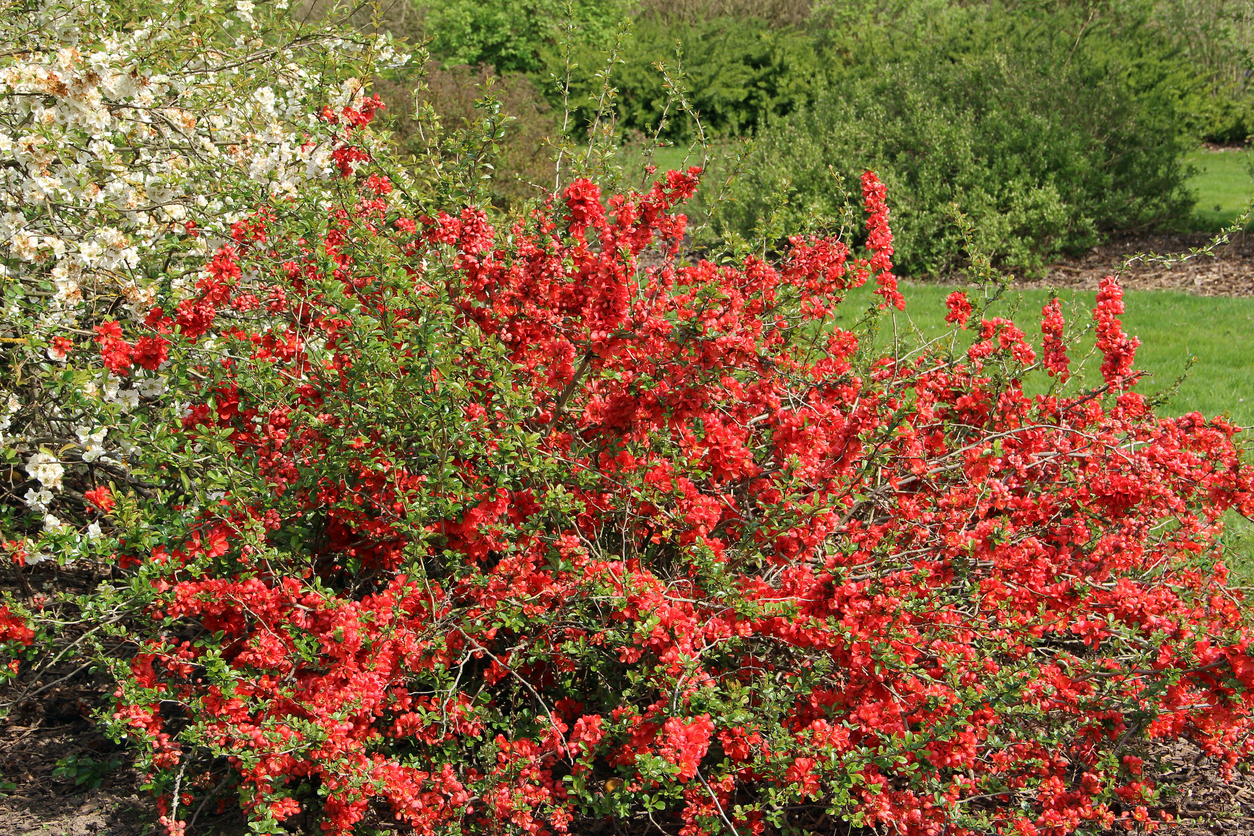
One of the earliest blooming spring bushes and a rose relative, the flowering quince offers glossy, sometimes red-tinged foliage and 1½- to 2½-inch roselike blooms. The blooms are available in shades from pink through orange and red and in forms from single to fully double. Hardy in zones 4 through 8, the deciduous shrub varies in size from about 3 feet to 10 feet high. Some types even make bitter fruits, more appropriate for jelly-making than for eating. And, thanks to its thorns, flowering quince may convince any larcenous lurker to call it quits!
7. Hawthorn (Crataegus spp.)
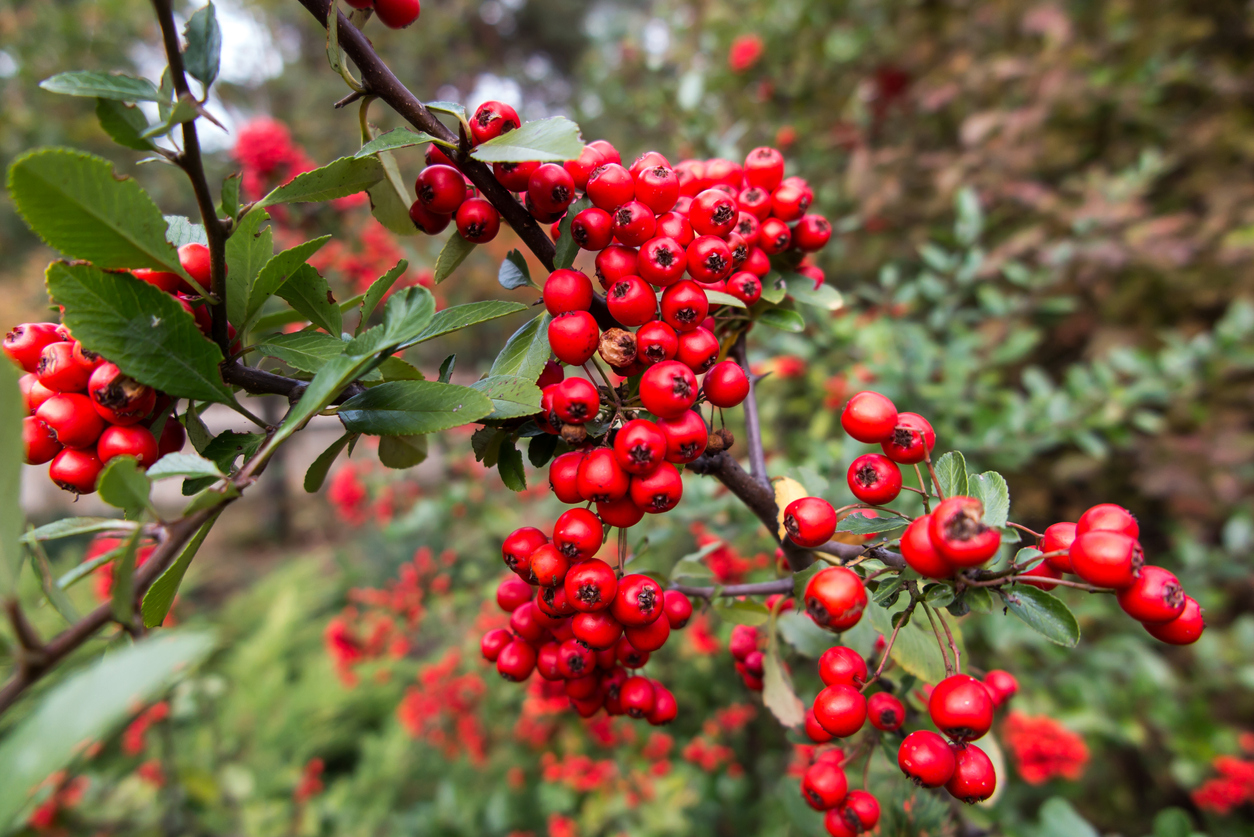
Among other plants with thorns and flowers, deciduous hawthorn shrubs or trees bloom in spring and also are related to the rose. Their flowers usually are single and white, but the showiest English types, hardy in zones 4 through 7, can produce double blooms in shades of red, white, and pink. Those flowers generally are followed by small fruits similar to crabapples in autumn. Hawthorns vary in ultimate height from 15 to 30 feet and make prickly hedges—or the type of tree no criminal will want to climb.
8. Lemon Tree (Citrus limon)
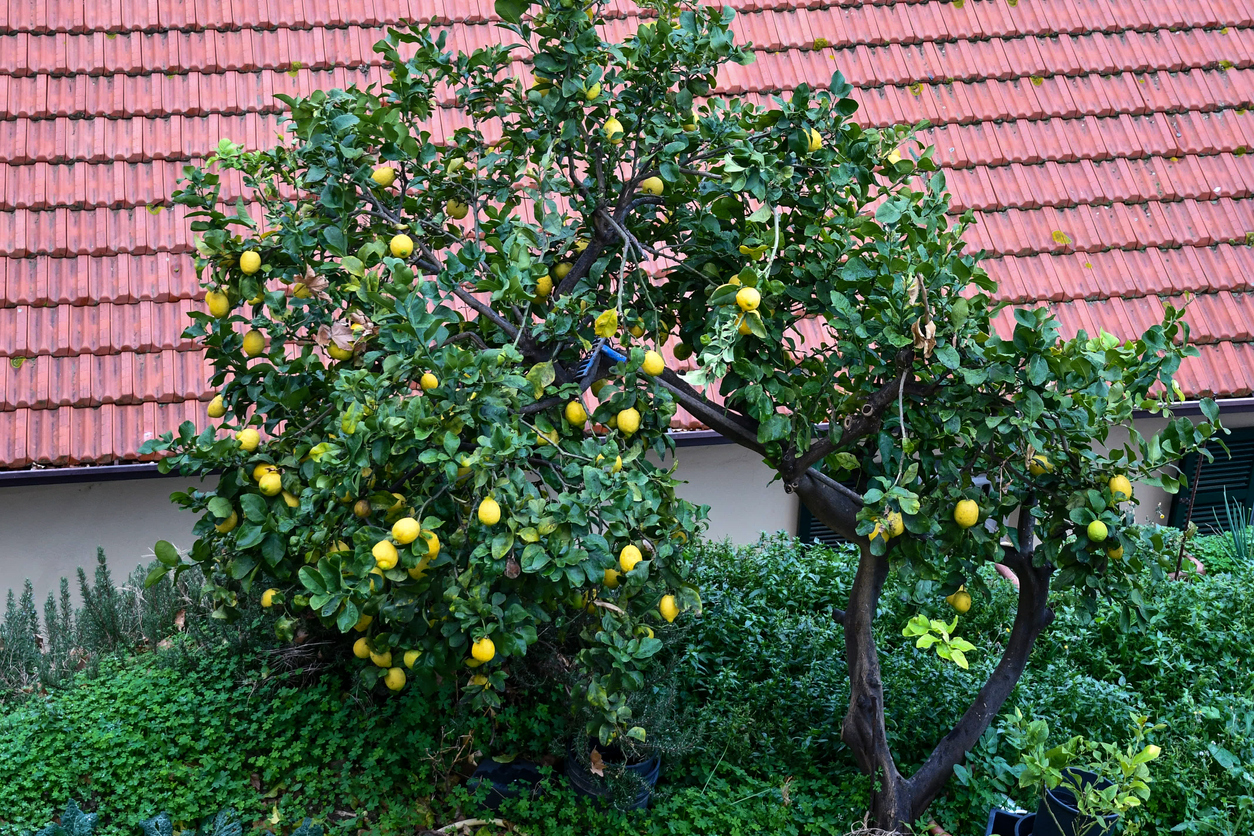
Several types of citrus are thorny plants, including lemon trees like Lisbon lemon. It generally grows as tall as 15 feet in the landscape in zones 9 to 11, but can reach even higher in the right conditions. In addition to providing glossy evergreen foliage, fragrant purple-tinged white blooms, and winter fruits, lacerating lemon trees can end any criminal’s climbing aspirations on a sour note!
9. Eastern Prickly Pear (Opuntia humifusa)

Although many types of cacti present a formidable appearance, most of them can’t be grown in the Northern United States. Some exceptions can be found in the Opuntia genus, with eastern prickly pear being hardy in zones 4 to 9. Growing to about a foot tall, it produces 3-inch yellow blooms in summer followed by edible red fruits. This “pear” would make a good choice for dry flower beds, especially those beneath windows where anyone taking a stab at forced entry might be stabbed by cactus spines in return.
10. Pyracantha (Pyracantha spp.)
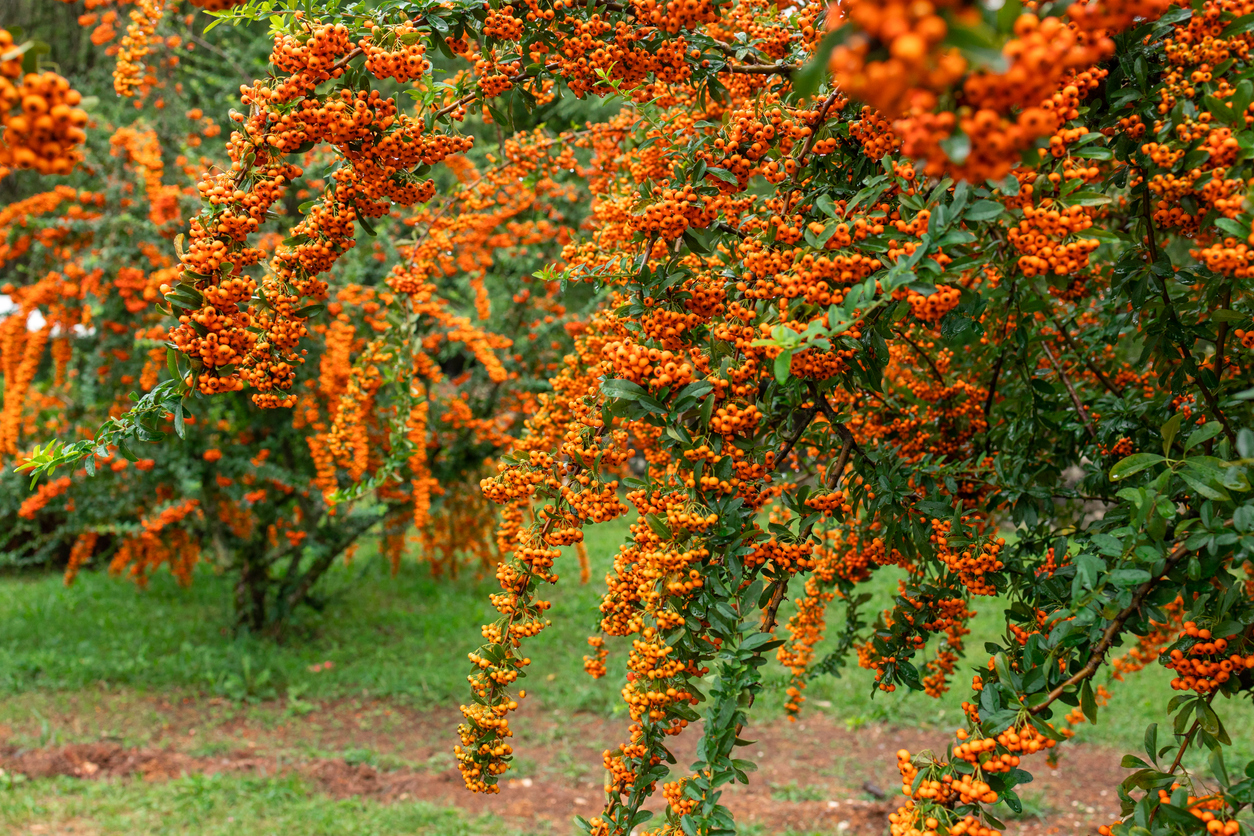
Often packed into a prickly hedge, the evergreen pyracantha shrub also is known as firethorn due to its combination of red berries and blood-drawing “poisoned” thorns, which can raise rashes on susceptible individuals. The shrubs, which top out at a variety of heights between 2 and 15 feet in zones 6 to 9, also produce clusters of white flowers in spring (whose scent some may find fetid). Low-growing cultivars such as ‘Lowboy’ can be grown as a foundation shrub or ground cover to discourage tiptoeing thieves.
11. Rose (Rosa spp.)
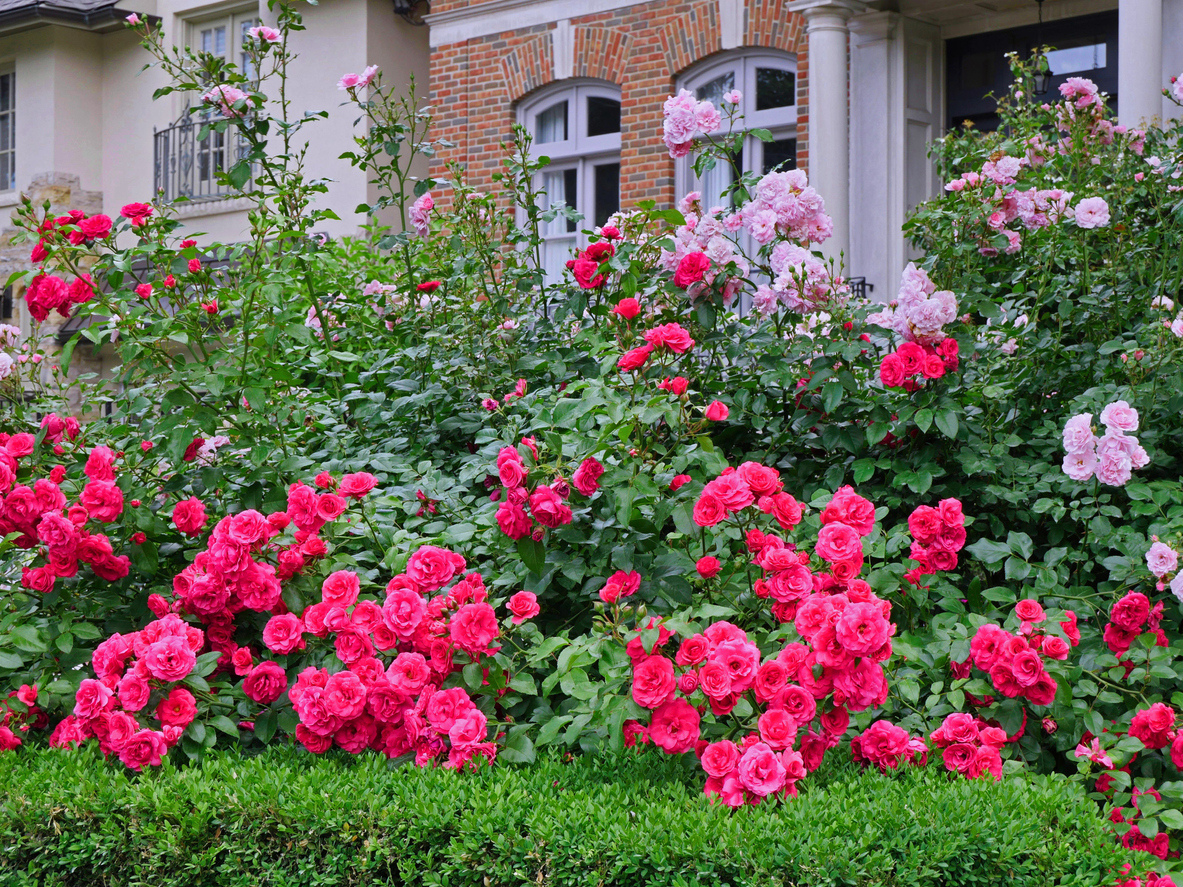
Probably the most common thorny plants, roses also remain among the most attractive and versatile due to their wide range of colors, forms, and habits. Climbing roses can be trained to grow on or atop fences, on the outer walls of buildings, and even as ground covers, routing robbers on all sides. You can find types of roses that are hardy to almost every climate—with the possible exception of zone 1—and almost all of them have thorns.
12. Trifoliate Orange (Poncirus trifoliata)
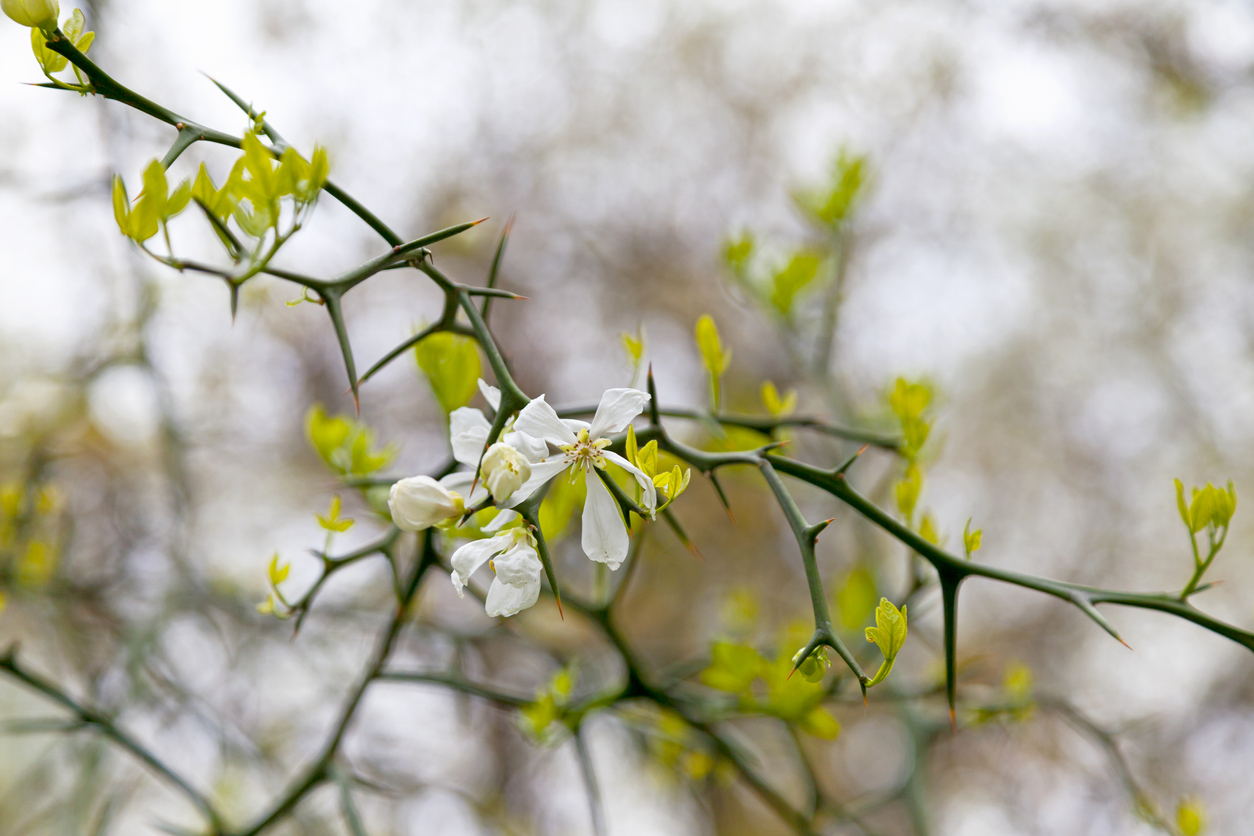
Once used to keep cows in, this “hardy orange” now can be used to keep crooks out in zones 5 through 9. Although its fruits are too bitter to eat, it belongs to the same family as citrus trees and bears some resemblance to them, with glossy leaves and yellow “oranges.” Before the popularization of barbed wire, its tangled branches (which contain spines up to 2 inches long) did a good job of hedging in livestock. Although nobody knows which thorny plant has the sharpest barbs, this one definitely should make the cut—if not several!
